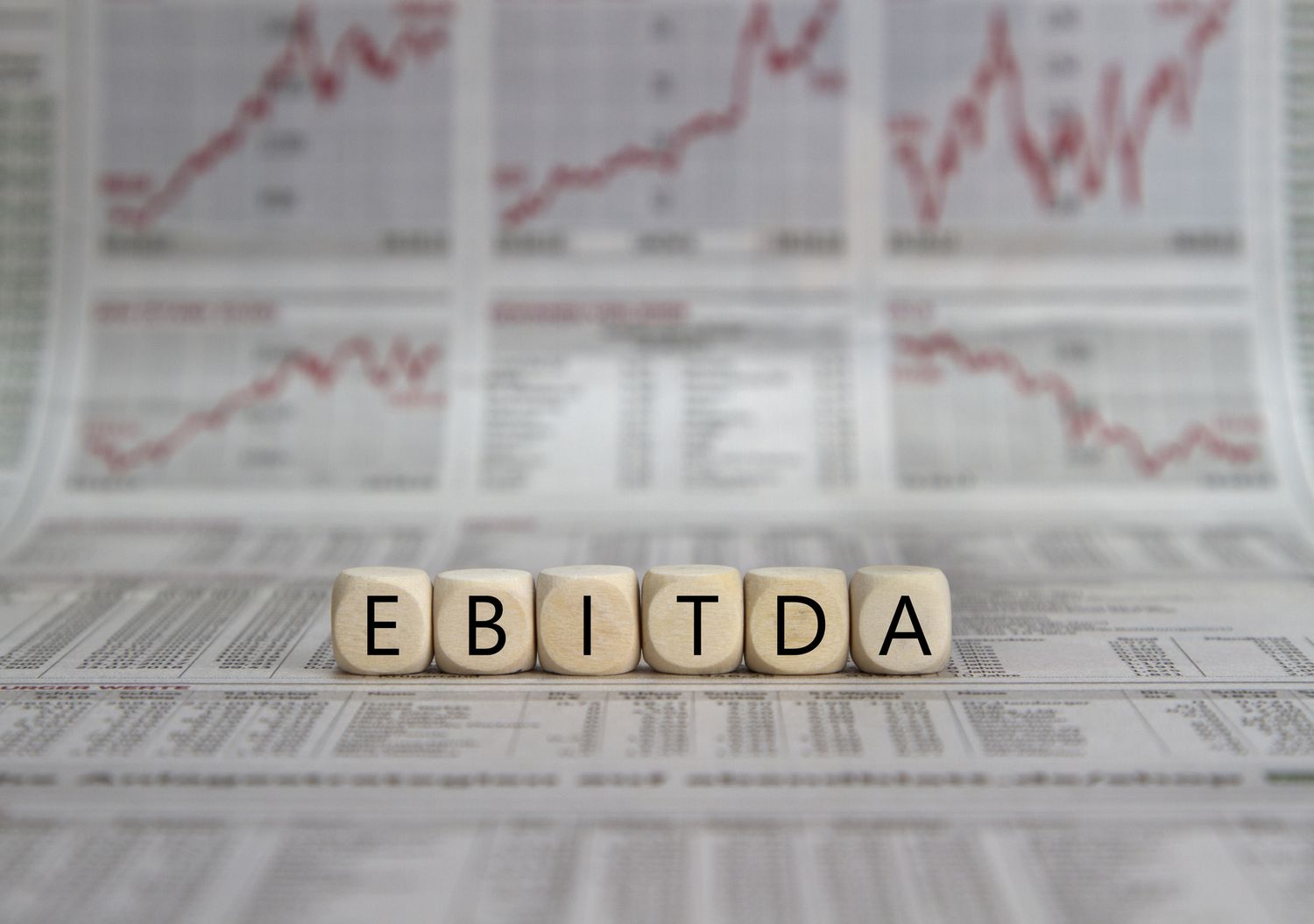The ratio of enterprise value to earnings before interest, taxes, depreciation, and amortization (EV/EBITDA) can offer far more insight into companies than the most popular means, the price-to-earnings (P/E) ratio. While the “healthy” range for EV/EBITDA varies by industry—in 2024, it ranged from about eight to 30, depending on the sector—this ratio provides critical context when analyzing a company’s value.
Many analysts consider an EV/EBITDA below 10 a strong signal of an undervalued company. However, this guideline is far from universal, and savvy investors recognize the importance of industry-specific comparisons.
We’ll give this sector-based data below. In addition, we’ll break down the ratio’s elements, explore its significance across different sectors, and provide you with the means to incorporate EV/EBITDA into your growing analytical tool kit.
Key Takeaways
- The ratio of enterprise value to earnings before interest, taxes, depreciation, and amortization (EV/EBITDA) compares the value of a company—debt included—to the company’s cash earnings minus non-cash expenses.
- Enterprise value (EV) calculates a company’s total value by considering market capitalization, debt, and cash reserves.
- EBITDA measures a company’s core operational profitability by excluding non-cash expenses and the effects of financing and tax structures.
- The EV/EBITDA metric is most handy for comparing companies within the same sector since industry norms vary widely.
- Investors should use EV/EBITDA with other financial metrics and qualitative factors when evaluating a firm.
Enterprise Value (EV)
EV provides a better gauge of a company’s worth for many investors than market capitalization alone. While some investors simply look at a company’s market cap to determine a company’s value, other investors believe enterprise value gives a more complete picture. That’s because enterprise value also considers the amount of debt the company carries, as well as its cash reserves.
EV comprises the following:
- Market capitalization: The total value of a company’s outstanding shares
- Total debt: Both short-term and long-term obligations
- Cash and cash equivalents: Liquid assets that could be used to pay off debt
EV is particularly valuable for those considering potential acquisitions or comparing companies with different capital structures.
Calculating Enterprise Value (EV)
To calculate enterprise value, determine the company’s market capitalization by multiplying the company’s outstanding shares by the market price per share. To this number, add the company’s total long-term and short-term debt. Lastly, subtract the company’s cash and cash equivalents. You now have the company’s enterprise value.
EV=MarketCapitalization+TotalDebt−CashandCashEquivalents
For example, suppose Company A has the following:
- A market cap of $1 billion
- Total debt of $200 million
- Cash reserves of $100 million
The EV would be $1 billion + $200 million – $100 million = $1.1 billion
This figure is the theoretical takeover price an acquirer would need to pay.
Earnings Before Interest, Taxes, Depreciation, and Amortization (EBITDA)
Investors use EBITDA as a useful way to measure a company’s overall financial performance and profitability. EBITDA is a straightforward metric that investors can calculate using numbers on a company’s balance sheet and income statement.
It measures a company’s operational performance, stripping away the effects of financing decisions, tax shifts, and accounting practices.
Calculating EBITDA
To calculate EBITDA for a company, you’ll need to first find the earnings, tax, and interest figures on the company’s income statement. You can find the depreciation and amortization amounts in the company’s cash flow statement.
While the full calculation involves adding back interest, taxes, depreciation, and amortization to net income, a common shortcut is as follows:
EBITDA=OperatingProfit(EBIT)+Depreciation+Amortization
For instance, suppose Company B reports the following:
- Operating profit of $50 million
- Depreciation of $10 million
- Amortization of $5 million
The EBITDA would be $50 million + $10 million + $5 million = $65 million
EBITDA’s strength lies in its ability to neutralize differences in tax rates, depreciation schedules, and financing structures, making it useful for comparing profitability across companies and industries. However, some argue it can paint an overly rosy picture by excluding the real business costs.
The EV/EBITDA ratio is particularly useful when evaluating companies within the same industry since it accounts for differences in capital structures that might skew other metrics like the P/E ratio.
EV/EBITDA Multiple
The EV/EBITDA ratio is popular for comparing the value of a company, debt included, to the company’s cash earnings minus noncash expenses.
Calculating EV/EBITDA
EV/EBITDA=EnterpriseValue/EBITDA
Interpreting EV/EBITDA
- Lower ratios generally signify a more attractive valuation.
- Industry averages vary widely, making sector-specific comparisons far more relevant.
- A ratio below 10 is often considered attractive, but this isn’t a hard-and-fast rule.
For example, suppose Company C has the following data:
- EV of $2 billion
- EBITDA of $200 million
The EV/EBITDA would be $2 billion / $200 million = 10
This result suggests Company Z is trading at 10 times its EBITDA.
Benefits of EV/EBITDA Analysis
Like the P/E ratio, the lower the EV/EBITDA, the cheaper the valuation for a company. Here are its main advantages as a valuation method:
- Capital structure neutral: Unlike P/E ratios, EV/EBITDA isn’t affected by a company’s debt levels, making it better for comparing firms with different leverage levels.
- Cross-border comparisons: By excluding taxes, EV/EBITDA makes it easier to make more accurate international comparisons.
- Acquisition valuation: The ratio provides a clearer picture of a company’s value to a potential acquirer, including assumed debt.
- Cash flow proxy: EBITDA serves as a rough approximation of cash flow, making EV/EBITDA useful for cash flow-based valuations.
Nevertheless, EV/EBITDA shouldn’t be used in isolation. Capital expenditure requirements, working capital needs, and growth prospects are also important when evaluating a company’s fundamentals.
What Does a High EV/EBITDA Mean?
A high EV/EBITDA signals that a company is overvalued. When using the ratio, you should only apply it comparatively within a specific sector. For example, utilities have different ratios—often far lower, in fact—than consumer discretionary firms.
What Does a Negative EV/EBITDA Mean?
A negative EV/EBITDA can occur in two main scenarios, each with different implications:
- Negative EV: This happens when a company’s cash and cash equivalents exceed its market capitalization plus debt. It’s rare but can occur in cash-rich companies with low market valuations.
- Negative EBITDA: This indicates the company is losing money at the operational level. It’s common in early-stage growth companies or those in financial distress.
What Is Discounted Cash Flow?
Discounted cash flow (DCF) analysis estimates the value of an investment based on its expected future cash flows. It’s widely used in finance for valuing businesses, projects, and assets. Here’s how it works.
- Forecast future cash flows: First, you predict the target’s cash flows for a future period (often five to 10 years).
- Determine discount rate: Choose a rate that reflects the time value of money and the investment’s risk. This is often the weighted average cost of capital (WACC).
- Calculate present value: Discount these future cash flows back to their present value using the chosen rate.
- Add terminal value: Estimate and discount the value of cash flows beyond the forecast period.
- Sum up: Add all discounted values to get the estimated investment value.
The Bottom Line
EV/EBITDA provides a more comprehensive view than traditional ratios like P/E. By accounting for a company’s debt and cash position, it provides a clearer picture of a firm’s true value and operational efficiency. While a ratio below 10 is often considered attractive, investors must remember that “healthy” EV/EBITDA levels vary significantly across industries and market conditions.
To use this metric effectively, compare companies within the same sector and consider EV/EBITDA alongside other financial ratios and qualitative factors. While EBITDA offers insights into operational performance, it doesn’t account for capital expenditures or changes in working capital, which can be critical for long-term sustainability.

